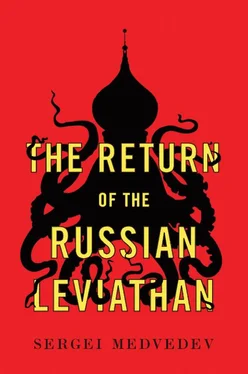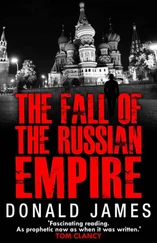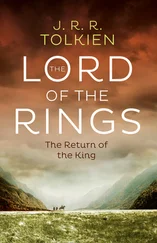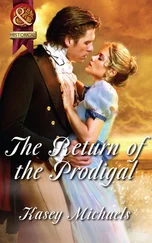Suddenly one of the girls said, ‘Let’s go to Red Square!’ We looked at her in bewilderment, as if she had just appeared from another planet. In fact, she had come from another planet, because she had lived in Canada for many years, being the daughter of the Soviet Ambassador, and she had returned simply to finish her schooling. And she was the only one who had got the idea into her head at this significant moment in our lives to go to Red Square; to stand in the shadow of the towers of state, alongside Lenin’s Mausoleum and the tombs of the Bolsheviks. We stayed where we were, on the bank of the river, listening to the dawn chorus.
I really love Moscow. I love its boulevards, and the little alleys that lead off from the streets around Nikitsky Square; the sound of music coming from the open windows of the Conservatory; the old houses in the Bauman Street District, and the monasteries along the Yauza River. But I can’t bring myself to love Red Square and the Kremlin. Maybe I can enjoy the picture-postcard view you get from a distance, from the Bolshoi Kamenny Bridge; but I don’t want to go there simply to marvel at the beauty, or for a bit of peace or to feel the history.
The poet, Osip Mandelstam, wrote: ‘The earth is nowhere as round as on Red Square’. [3] A line from the untitled poem, which begins, ‘Now I am dead in my grave with my lips moving’. http://writing.upenn.edu/epc/library/Mandelstam_Poems_Ilya-Bernstein.pdf . ‘The Poems of Osip Mandelstam’, trans Ilya Bernstein (EPC Digital Edition, 2014, p. 40).
The enormous size and the slope of the square make it suitable for parades and processions, for state executions and state funerals. Its proportions are right for intercontinental ballistic missiles, but not for people. It tries to be part of the city – all of these ‘stalls’ in the GUM shopping arcade with their sky-high prices, the popular ice-rinks put up by the Bosco company each winter and the concerts with military bands. But you’ll hardly find any Muscovites there, just crowds of people from out of town, policemen, foreigners and actors dressed up as Lenin and Stalin, who pose for photographs with the visitors. There is nothing in this space designed for people: no cosy park with benches; no little alleyways like in Prague Castle; no cathedrals to pop into even if you don’t have any special reason, just to light a candle and stand in front of the icon. The whole Kremlin is simply the embodiment of the state, the raison d’état . It is not a space for the individual, for the people or for a memorial: it is a space for power.
As a result, Red Square evokes the uncomfortable feeling that nothing is on a human scale. Lenin’s restless corpse lies there; the shadows of the Streltsy , executed in 1698, are still alive; [4] Peter the Great brutally put down a rebellion by his soldiers known as the streltsy – from the verb, strelyat , meaning ‘to shoot’ – who were protesting about their conditions. Some were publicly executed on Red Square.
and the corridors of the Kremlin, so many witnesses say, are stalked by the ghosts of Ivan the Terrible and Stalin. You can even smell the smoke of ‘Herzegovina Flor’, Stalin’s favourite tobacco. The Spassky (or Saviour) Gates were once open for everyone. Before the Revolution, the people would pray to the icon of the Saviour, then pass through these gates into the Kremlin; having obtained their free ticket, they could then wander freely everywhere. But under Stalin the gates became the symbol of the inaccessibility of the Kremlin. Having taken over the Kremlin in March 1918, the Bolsheviks did everything to destroy its historical memory. [5] Within a few months of the Revolution in November 1917, the Bolsheviks moved the Russian capital back to Moscow from Petrograd (formerly St Petersburg, later Leningrad; now once again St Petersburg).
More than half the buildings inside its walls were demolished, including the Monasteries of the Miracles and of the Ascension and the Smaller Nikolaev Palace. The Kremlin was sterilized, all signs of history or humanity were done away with; it was made suitable only for the state. That is why it is so frightening to stand there on winter nights, caught in the glare of the spotlights and the icy wind of history.
There are two types of towns or cities. There’s the market town, which grew up in the Middle Ages as a counter to royal power and where institutions were formed such as guilds, communal authorities and an independent third estate, which represented the ‘citizen’ (a word derived from ‘city’, originally meaning someone who dwelt in a town or a city). Then there’s the fortress town, which arose in the shadow of power, is controlled by, and serves, the state. Moscow grew up around a fortress constructed at the confluence of the rivers Moskva and Neglinka and was always of the second type; just a trading quarter in the shadow of the Kremlin. The whole planning of the city, its radial structure, pulls everything into the centre. The rings of Moscow, like the Garden and the Boulevard rings, were in fact walls built as a defence against the external enemy.
It is inconvenient to live next to a fortress, especially in the twenty-first century. Moscow’s radial structure suited the Tsar’s forays in the sixteenth century, but not today’s million cars; hence the city’s traffic problem. Most journeys in the city one way or another go through the centre, just as 70 per cent of all cargo in Russia goes through Moscow, because all the customs terminals are here. Sooner or later the fortress will be choked by this flow of resources. Living next to the centre of power pushes up the price of real estate and creates familiar problems, from the shutting off of main roads so that the country’s leaders can pass by, to the closure of whole areas of the city for reasons of security. For example, on behalf of the Presidential Administration, the Federal Protection Service (FSO) demanded that a whole historic part of Kitai-Gorod alongside the Kremlin between Varvarka and Ilyinka Streets be shut off, enclosed by ‘a Great Chinese Fence’, thus creating in the centre of Moscow something like Beijing’s Forbidden City.
When the powers-that-be decide to come closer to the people, it causes havoc, such as when the Prime Minister, Dmitry Medvedev, chose to step outside the walls of the Kremlin. When he visited the Faculty of Journalism of Moscow University, they cancelled all classes and banned students from the building. When he went to the reopening of the Bolshoi Theatre, the police stopped rehearsals that were taking place in theatres nearby, and even destroyed scenery in the neighbouring Maly Theatre. It seemed that he was going just a couple of hundred metres outside the Kremlin, but the living body of the city was torn apart by the intrusion of the state.
There is only one solution: the city and the state have to get a divorce. The state should no longer be the main idea and the mystical purpose of life in Moscow. The trading quarter has grown so much that the fortress has become a burden on it. In modern theories of governance, the state has lost its sacred origins, and power has become a mere function, just another production line, like the factories and the municipal economy. Manufacturing has today been moved outside the city boundaries, and the old factory workshops are going through a process of gentrification, being converted into museums, artists’ studios and university campuses. The old industrial areas are being given back to society.
In just the same way, the implementation of the functions of state power with all its costs – the emergency flashing lights on the cars, the government cortèges, the restricted areas – should be taken outside the city boundaries. The Kremlin must be given back to the people, to the nation, to society. Ten years ago, in an interview with the Vedomosti newspaper, the writer Vasily Aksyonov proposed a plan to clean up the Kremlin: ‘There’s an unhealthy aura there’, he said. ‘The President and his administration shouldn’t be in there. Instead, there should be a museum of the centuries, a museum of Russian history. The Kremlin should be a cultural and historical memorial area.’ [6] https://www.vedomosti.ru/opinion/articles/2008/03/14/stalinskij-proekt-u-stola-vlasti . ‘The Stalinist Project: At the Table of Power’ (in Russian), 14 March 2008.
Читать дальше












